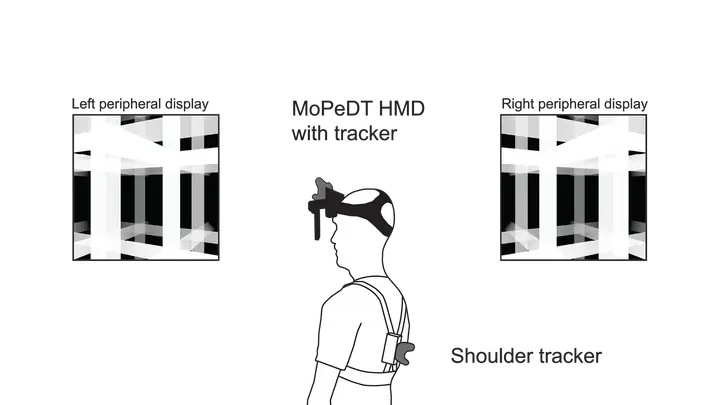
Abstract
Falls are a major health concern. Existing augmented reality (AR) and virtual reality solutions for fall prevention aim to improve balance in dedicated training sessions. We propose a novel AR prototype as an assistive wearable device to improve balance and prevent falls in daily life. We use a custom head-mounted display toolkit to present augmented visual orientation cues in the peripheral field of view. The cues provide a continuous space-stationary visual reference frame for balance control using the user’s tracked head position. In a proof of concept study, users performed a series of balance trials to test the effect of the displayed visual cues on body sway. Our results showed that body sway can be reduced with our device, indicating improved balance. We also showed that superimposed movements of the visual reference in forward-backward or sideways directions induce respective sway responses. This indicates a direction-specific balance integration of the displayed cues. Based on our findings, we conclude that artificially generated visual orientation cues using AR can improve balance and could possibly reduce fall risk.